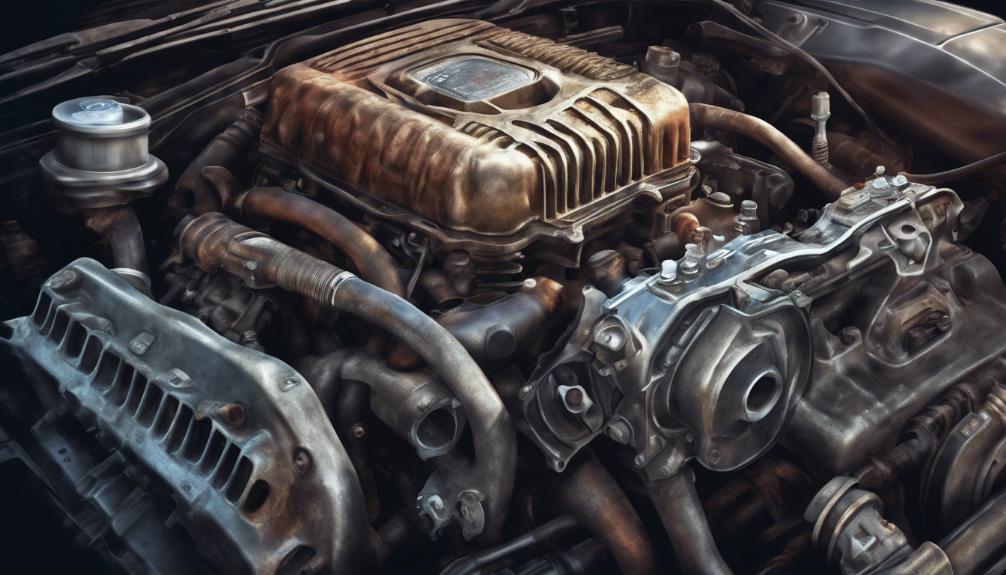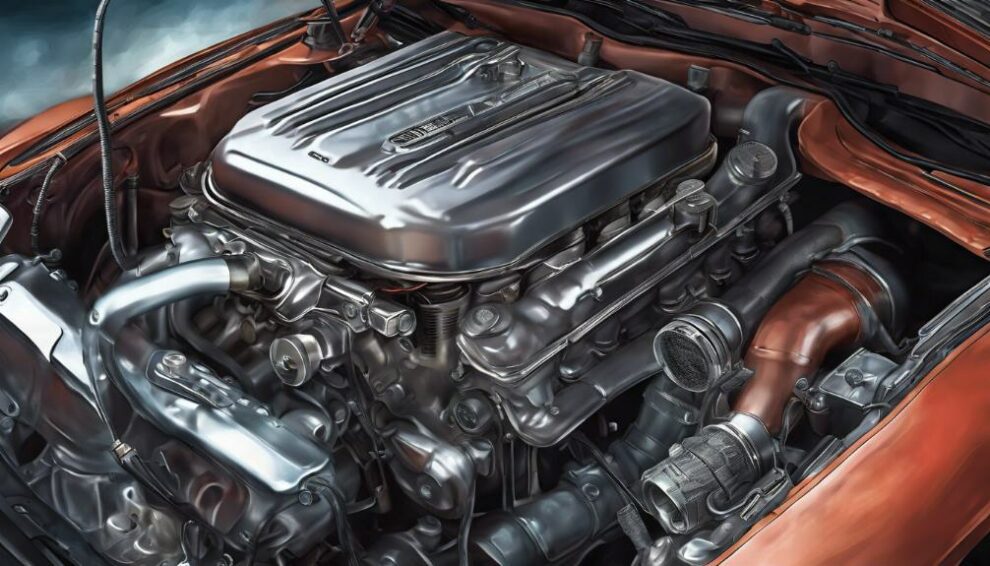If your vehicle displays a P0405 code, indicating EGR sensor trouble, symptoms include a lit Check Engine Light, stalling, rough idle, and reduced performance.
Causes may stem from low sensor circuit voltage, faulty EGR valve position sensor, or damaged wiring. To diagnose, scan for codes, test sensor readings, and check voltage.
Resolve by replacing the faulty sensor, adhering to manufacturer guidelines, and maintaining the EGR valve. Prompt attention prevents complications and safeguards engine health. Seeking certified assistance is essential.
Understanding the significance of EGR sensor upkeep and timely repairs ensures top-notch vehicle function.
Key Points
- P0405 code indicates EGR sensor issues
- Symptoms include engine hesitation and poor performance
- Check wiring and sensor readings for diagnosis
- Prompt attention prevents further engine damage
- Replace faulty sensors and maintain EGR system
Symptoms of P0405 Code

Experiencing a P0405 code can trigger various symptoms, including the illumination of the Check Engine Light.
If you notice this warning light, along with engine stalling or hesitation during acceleration, it could point to a P0405 issue.
Another sign to watch for is rough and erratic idle, which might indicate problems related to the Exhaust Gas Recirculation (EGR) system.
Furthermore, decreased engine performance such as reduced power output and increased NOx emissions could be linked to a P0405 fault.
Your vehicle may also exhibit poor fuel economy, as the EGR sensor troubles can impact overall engine efficiency.
When faced with these symptoms, it’s important to address the issue promptly to prevent further damage and maintain excellent engine performance.
Consider performing maintenance checks and utilizing troubleshooting tips to identify and resolve potential issues related to the P0405 code before they escalate.
Causes of P0405 Code
If you notice the Check Engine Light along with engine stalling or hesitation during acceleration, investigating potential causes of the P0405 code becomes important.
The P0405 code is often triggered by lower than normal voltage in the EGR sensor circuit. Common culprits behind this issue include a defective EGR valve position sensor or a damaged EGR valve itself.
Also, circuit issues leading to the EGR sensor, such as damaged or corroded wires, or grounded wires, can also result in the P0405 code. Ignoring the P0405 code can lead to EGR system disablement, potential engine damage, and a rough ride.
To prevent further complications and make sure your vehicle performs well, it’s essential to address the P0405 code promptly.
Certified technicians can assist you in diagnosing and resolving issues with the EGR valve and electrical components to get your vehicle back in top condition.
Diagnosing a P0405 Code

To diagnose a P0405 code efficiently, start by scanning for stored codes and testing EGR sensor readings.
Begin by using a scan tool to retrieve any trouble codes stored in the Powertrain Control Module (PCM) related to the EGR system. Pay close attention to the specific P0405 code.
Next, conduct EGR sensor testing to evaluate its performance. This involves checking the sensor’s voltage readings and ensuring they’re within the manufacturer’s specified range.
Then, perform a thorough inspection of the wiring connected to the EGR sensor. Look for any signs of damage, corrosion, or loose connections that could be causing the low circuit voltage detected by the PCM.
Carefully examine the wiring harness and connectors for any visible issues.
Fixing a P0405 Code
Begin by addressing the P0405 code by focusing on the replacement of the faulty EGR valve position sensor or DPFE sensor.
Proper sensor installation is vital for resolving the P0405 issue effectively. Make sure to follow manufacturer guidelines during the replacement process to guarantee correct functioning.
Then, cleaning or replacing the EGR valve may be necessary to address the P0405 code fully. Ensure that the EGR valve is free from any build-up that could impede its operation.
Understanding the functions of EGR sensors like the EGR valve position sensor and DPFE sensor is essential for accurate repair.
Timely and accurate testing procedures are important to ensure the successful resolution of a P0405 code.
By focusing on sensor replacement and EGR valve maintenance, you can effectively tackle the P0405 code and restore your vehicle’s peak performance.
Can ABS Sensor Replacement Cause Exhaust Gas Recirculation Sensor Troubles?
Yes, a complete ABS sensor replacement can cause exhaust gas recirculation sensor troubles. When the ABS sensor is replaced, it can disrupt the EGR sensor’s functioning, leading to potential issues with the exhaust gas recirculation system. It is important to be aware of potential implications when performing a complete ABS sensor replacement.
EGR Sensors and DPFE

When understanding the functionality of EGR sensors like the EGR valve position sensor and DPFE sensor, it becomes apparent how essential they’re in monitoring and controlling the flow of exhaust gases in the EGR system.
The EGR valve position sensor guarantees proper emissions control by measuring the position of the EGR valve.
On the other hand, the DPFE sensor plays a critical role by measuring the pressure difference across the EGR valve to regulate EGR flow effectively.
To diagnose issues related to EGR sensors, accurate testing procedures are essential.
Testing the EGR sensors, including the DPFE sensor functionality, is a key step in resolving problems like the P0405 trouble code.
Ensuring these sensors are functioning correctly is necessary for maintaining emissions compliance and peak engine performance.
Proper understanding of EGR sensor testing techniques and DPFE sensor functionality is crucial for efficient diagnosis and repair of EGR system issues.
Importance of Prompt Attention
Ignoring the P0405 trouble code can have severe consequences on your vehicle’s EGR system and engine performance, making immediate attention imperative for preventing further complications.
By addressing the P0405 code promptly, you engage in preventive maintenance, safeguarding your EGR system from disablement and potential engine damage.
Timely intervention not only averts rough rides and decreased engine performance but also guarantees excellent vehicle operation.
Seeking assistance from certified technicians is vital for effectively resolving the P0405 issue and optimizing your vehicle’s performance.
Driving with a P0405 code poses risks of engine damage, underscoring the importance of swift action. Therefore, prioritizing the resolution of the P0405 trouble code is essential for maintaining your vehicle’s health and performance.
Make performance optimization a priority by promptly addressing the P0405 code, allowing for a smoother driving experience and preventing further complications down the road.
As an Amazon Associate we earn from qualifying purchases.










